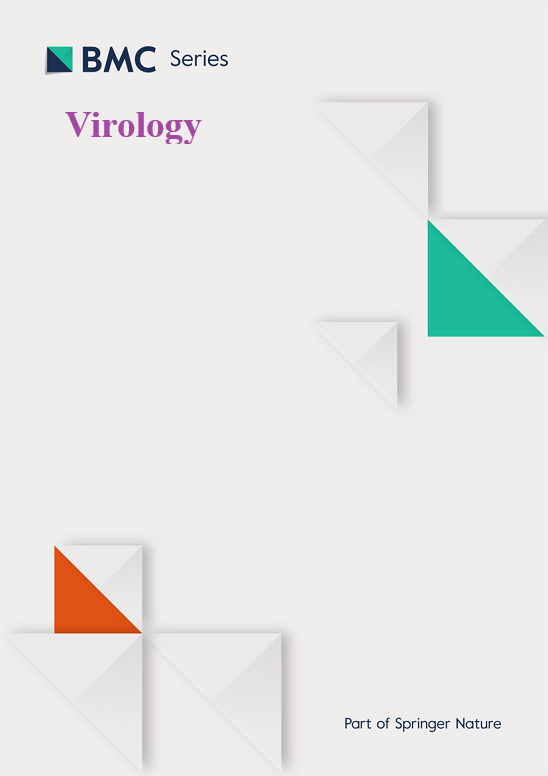Multi-epitope microsphere vaccine modified immunological efficacy against LMBV in largemouth bass (Micropterus salmoides)
IF 2.8
3区 医学
Q3 VIROLOGY
引用次数: 0
Abstract
The largemouth bass iridovirus disease, caused by the largemouth bass virus (LMBV), has a mortality rate of up to 60 %, and no commercial vaccine is available. This study focused on developing a vaccine against LMBV by engineering Escherichia coli to express highly immunogenic antigen epitopes (S11, S12, S3) from preliminary research. A stable recombinant dodecapeptide antigen gene with flexible linkers was constructed, yielding a 25 kDa fusion protein (X1-J) confirmed by SDS-PAGE. The resulting antigen proteins were purified and combined with PLGA (poly (lactic-co-glycolic acid)) to form nanospheres (P-P) with a diameter of 17.2 μm, spherical shape, porous surface, and a 34.13 % drug loading efficiency. By day 21 post-vaccination, both the P groups (X1-J groups) and the P-P groups exhibited significantly elevated immune-related enzyme activities (AKP, CAT, SOD, ACP) in comparison to the controls (P < 0.05). Furthermore, the P-P groups exhibited elevated levels of immune-related gene expression, including IgM, IL-8, TNF-α, IFN-γ, CD40, TGF-β, and IL-10. Finally, we tested the relative percent survival values of the vaccine (P-P) using LMBV, which can reach 15.79 %, 31.58 %, and 47.37 % (5, 10, and 20 μg/g) at 14 days after the injection of the virus. These values were significantly higher than those of the P group at the same concentrations. Our study introduces a new strategy for against LMBV and a reference for developing vaccines using multi-epitope technology.
多表位微球疫苗对大口黑鲈LMBV免疫效果的影响
由大口黑鲈病毒(LMBV)引起的大口黑鲈虹膜病毒病死亡率高达60%,目前尚无商业疫苗。本研究的重点是利用初步研究的高免疫原性抗原表位(S11, S12, S3)对大肠杆菌进行工程改造,开发一种抗LMBV的疫苗。构建了一个稳定的带柔性连接体的重组十二肽抗原基因,得到一个25 kDa的融合蛋白(X1-J),经SDS-PAGE证实。所得抗原蛋白经纯化后与聚乳酸-羟基乙酸(PLGA)结合,形成直径为17.2 μm的球形、表面多孔的纳米微球(P-P),载药效率为34.13%。接种后第21天,P组(X1-J组)和P-P组的免疫相关酶(AKP、CAT、SOD、ACP)活性均显著高于对照组(P <;0.05)。此外,P-P组免疫相关基因表达水平升高,包括IgM、IL-8、TNF-α、IFN-γ、CD40、TGF-β和IL-10。最后,我们用LMBV检测了疫苗的相对存活率(P-P),在注射后14天分别达到15.79%、31.58%和47.37%(5、10和20 μg/g)。这些数值均显著高于相同浓度P组。本研究提出了一种新的抗LMBV策略,并为利用多表位技术开发疫苗提供了参考。
本文章由计算机程序翻译,如有差异,请以英文原文为准。
求助全文
约1分钟内获得全文
求助全文
来源期刊

Virology
医学-病毒学
CiteScore
6.00
自引率
0.00%
发文量
157
审稿时长
50 days
期刊介绍:
Launched in 1955, Virology is a broad and inclusive journal that welcomes submissions on all aspects of virology including plant, animal, microbial and human viruses. The journal publishes basic research as well as pre-clinical and clinical studies of vaccines, anti-viral drugs and their development, anti-viral therapies, and computational studies of virus infections. Any submission that is of broad interest to the community of virologists/vaccinologists and reporting scientifically accurate and valuable research will be considered for publication, including negative findings and multidisciplinary work.Virology is open to reviews, research manuscripts, short communication, registered reports as well as follow-up manuscripts.
 求助内容:
求助内容: 应助结果提醒方式:
应助结果提醒方式:


